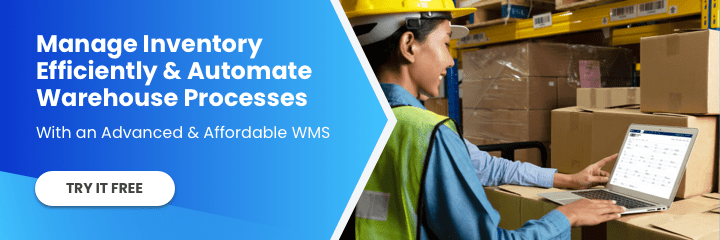Although the term cloud computing has recently spread like wildfire, many people are still left wondering, what is the cloud? Here’s a quick breakdown of common cloud terminology to help you better understand how your logistics business might use the cloud.
Click Here: Improve Your Operational Efficiency and Uptimes with Managed IT Solutions Solution
What is Cloud Computing?
It refers to a collection of servers hosted in a data center, allowing resources (CPU, memory, and storage) to be accessed and consumed remotely via the Internet.
Put simply, instead of keeping your servers in-house, when ‘in the cloud,’ your business servers are located in a data center and accessed online.
When your business needs more computing power, you can add more for a monthly fee and scale back if you need less, saving money in the process. Cloud-based systems adapt as you need them.
What is IaaS?
Let’s define the terminology first. IaaS stands for Infrastructure as a Service, and it refers to the ability to use a complete IT infrastructure (firewalls, network switches, servers, etc.) instead of buying or building it yourself.
In other words, you pay a monthly fee to a provider to run your software, data, and transactions from their equipment. In return, your provider is fully responsible for buying and maintaining your IT infrastructure and ensuring it runs 24/7.
Note: The IaaS provider is only responsible for the availability of your hardware. Your IaaS provider is not responsible for your operating system, software applications, and/or data.
What is SaaS?
Software as a Service (SaaS) is a similar concept to IaaS, but SaaS refers to software services only. SaaS refers to software that is:
- Licensed in a subscription model
- Hosted and managed by a company
- Consumed by others remotely via the Internet
The software provider installs, manages, and maintains the software and is responsible for the system and data availability. Examples of popular SaaS solutions include Microsoft Office 365 and Google Docs.
What is a Public Cloud?
The public cloud is a collection of cloud computing resources (servers, storage, and networks) shared by many users and accessed via the Internet.
In this model, all the hardware is shared among many companies, and the subscriber lacks full control over the performance of servers, computers, networks, or storage because everything is shared.
Although some logical segregation of computing resources exists, a sudden spike that deviates from the normal consumption of server resources can impact the responsiveness of computers and servers running from a shared environment. Plus, because public clouds are shared, they’re inherently more at risk for security exploits.
What is a Private Cloud?
Private clouds significantly differ from public clouds regarding privacy and how resources are consumed. Like public clouds, private clouds are a collection of servers, storage, and network devices consumed by remote users via the Internet.
The most important difference between public and private clouds is that in a private cloud environment, the customer has higher security, privacy, and control levels than in a public cloud.
In a private cloud environment, customers use dedicated hardware (not shared), and additional layers of network segmentation and protection protect the privacy and integrity of data and services.
What is a Hybrid Cloud?
The term hybrid cloud has two distinctly different meanings.
- The practice runs some systems from the public cloud while others from the private cloud.
Most businesses, such as financial and medical offices, have security compliance requirements. They often run and store sensitive systems and data in a private cloud. Meanwhile, less sensitive systems are typically run from the public cloud. - Run some parts of their systems on in-house servers and from the cloud.
This situation is particularly useful for companies. They decide to move systems with high cost of ownership to the cloud. This is a way of reducing overhead. Meanwhile, they keep low-cost systems in-house.
For example, many companies migrate their email system to Office 365 (a cost-intensive system) while keeping applications or file servers in-house. A hybrid approach is great for cutting costs and for the added convenience and security of the cloud.
Is the Cloud Right for Your Supply Chain Business?
The convenience of cloud computing offers numerous benefits to any supply chain organization. It doesn’t matter if it’s large or small. You can access your data and systems from any device. This means you and your team can work and collaborate from anywhere. It also helps employees file contracts, invoices, and client agreements in real time. Additionally, the cloud ensures round-the-clock availability and seamless software and hardware updates.
Of course! Making your business entirely cloud-based may not always be the best option. It’s important to plan carefully before making the move. Also, when moving systems to the cloud, choosing a cloud provider that aligns with your current and future technologies is crucial.
If you want to improve your productivity while cutting costs through cloud computing solutions, click the banner below.
If you want to learn about warehouse technology and optimizing warehouse processes, follow us on LinkedIn, YouTube, X, or Facebook. If you have other inquiries or suggestions, please contact us here. We’ll be happy to hear from you.













